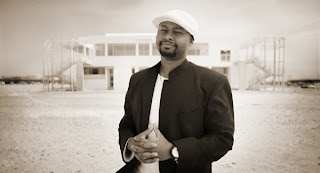Gentrification—with all its benefits of enlarged tax bases, much needed energy, new businesses and, at least at first, a fresh mix of ethnicities and cultures—seems to lead to the removal of the very character and characters that attracted the newcomers in the first place, be it artists and their DIY galleries, low rents for large spaces or, most disturbing to many, diversity. Urban renewal, even at its best and best-intentioned, wreaks havoc as its double-edged impact slices through communities. The architects of such plans rarely involve the communities targeted, and those communities' residents don't always have the political muscle to make sure their voices are heard.
And yet change, and changing over, is a constant of urban life. Stores change management or expand to serve a growing customer base. Rooming houses become one-family mini-castles or duplex dreams for young professionals. Empty lots fill with modest five-story multi-unit dwellings, towers of luxury and businesses large and small. Harlem, the black mecca of yesteryear and today, rocks steadily with the changes wrought upon and within it. The East Village seems reinvented every 20 years, and today roils with the debates on gentrification and its demerits.
Lower East Side Project, from New York Magazine's Festival of Ideas blog archive (week of April 11, 2011): http://www.festivalofideasnyc.com/blog
South African architect Mokena Makeka knows a little something about change. He witnessed his country's move from the cruel, inhuman policies of apartheid to a democracy of a multi-ethnic southern Africa. However imperfect, the country moves forward, hiccuping stubbornly toward a future it proudly writes for itself.
But the legacy of the last century is stamped indelibly on South Africa's cities, and the monumental effort to change exasperates and exhilarates. He chronicles his own contributions at 2010's Design Indaba, the decade-young all-encompassing design conference held in Cape Town (Makeka's hometown) that addresses design in all its scope as it relates in very real ways to the worlds with which it interacts.
Watch Mr. Makeka's presentation here: http://www.designindaba.com/speaker/presentation/mokena-makeka-2010
A recent walk through West Chelsea brought Mr. Makeka's presentation to mind. Here was a section of Manhattan that had seen seismic shifts in its fortunes. At the turn of the 20th century, New York boasted the largest harbor in the world, and the immigrant men and women who worked the docks, through necessity, lived nearby. Chelsea was a sea of tenements, a cluster of substandard housing and even worse services. Parks were nonexistent and disease was rampant. The wealthier lived only a few avenues over, but it might as well have been a universe away. Urban renewal first reared its insistent head in the 1930s, with the advent of President Franklin Delano Roosevelt's New Deal and New York Mayor Fiorello LaGuardia's urgent lobbying for his ailing Depression-era city.
 |
| The West Chelsea Department of Health building, a WPA project built in the 1930s |
 |
| Church of the Holy Apostle in West Chelsea |
 |
| The Hudson Guild spearheaded the earliest urban renewal drives in West Chelsea. The building that originally housed the nonprofit group was razed in the 1950s. |
 |
| The High Line Park, with the buildings of Frank Gehry and Jean Nouvel filling the sky behind it. |
 |
| Annabelle Selldorf's luxury tower at Eleventh Avenue |
 |
| This former waterfront warehouse was designed by Cass Gilbert, one of the many utilitarian buildings he worked on during his career. It will soon house a K-12 private school. |
 |
| The new finds a place among what remains of the old Chelsea. |


No comments:
Post a Comment